The Scania Chronicle
Page 4
By Christoph Büch and Steve St.Schmidt (Berlin 2023)
Series 0 from 1968:
Just "Scania"
The company name was shortened in 1968. From then on, the vehicles only bore the name Scania. The previous double name was not considered concise enough for some export markets. However, the company itself continued to be called Scania-Vabis. In the same year, the model designations also changed. The names of the model series were now based on the displacement of the engines. The L 36 became the L 50, the L 56 the L 80 and the L 76 series the L 110, depending on the size of the engines installed. As the type designations now ended with a zero, the series was later referred to as "Series 0" by Scania connoisseurs. In addition to the L 80 with a gross weight of 16.5 tons, the L 85 variant with a gross weight of 19 tons was added for export as the successor to the L 66, deviating from the "zero scheme".
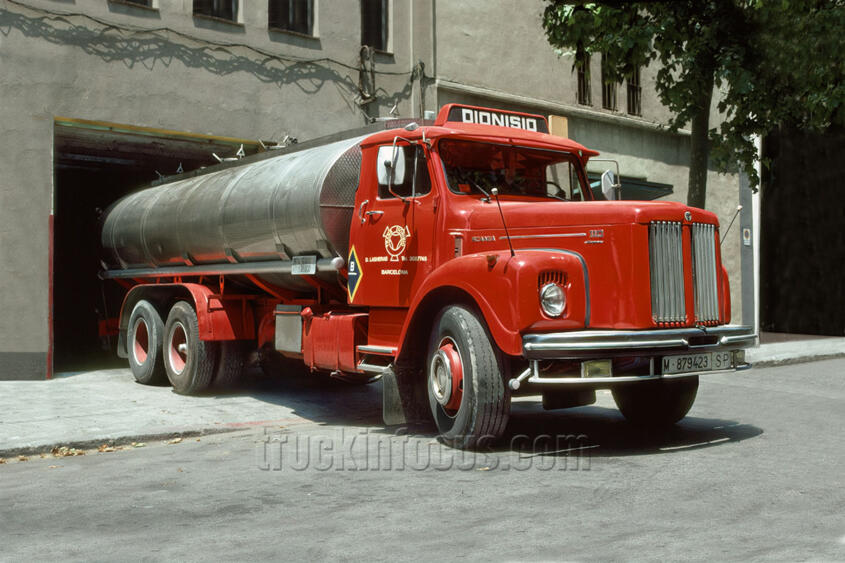
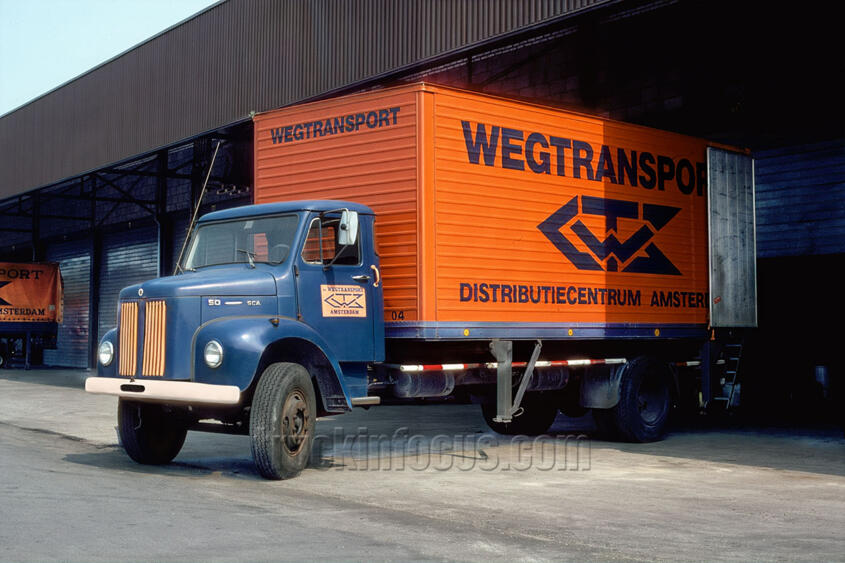
In 1968, the German Scania agency was founded in Koblenz and a network of repair shops was set up in Germany in the following years. In some cases, former Henschel and Krupp dealers who had become "homeless" were won over for Scania. Word of the robustness and technical qualities of the Swedish trucks gradually spread in Germany and sales figures rose steadily. At the time, Scania was one of the few foreign manufacturers to establish itself permanently on the German market, which was difficult for imported vehicles. By 1970 there were already around 500 Scania trucks registered in Germany. Five years later there were already 4,000.
The Swedish competitor Volvo had offered tiltable cabs since the beginning of the 1960s. Scania followed suit in February 1968 with a cab designed by the English product designer Lionel Sherrow. The LB 110 and its three-axle variant, the LBS 110, were born. The new cab could be tilted hydraulically by 60 degrees. The clear, angular design and the comfortable interior were very well received in the trade press. The modern appearance of the new cab-over was a real eye-catcher and immediately stood out on the road.
The first units of the LB 110 bore Scania lettering under the windshield, consisting of individual small chrome-plated letters. A year later, the letters were more than twice as large, but still individually attached.
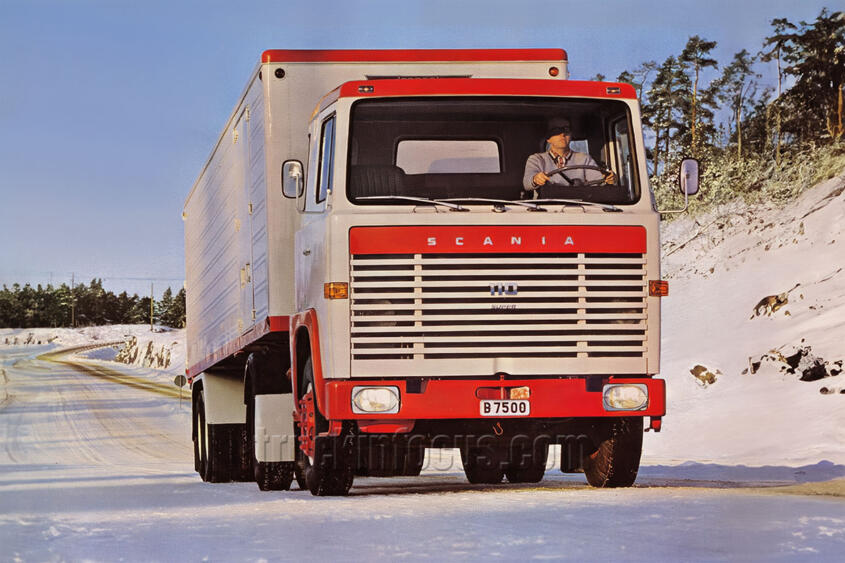
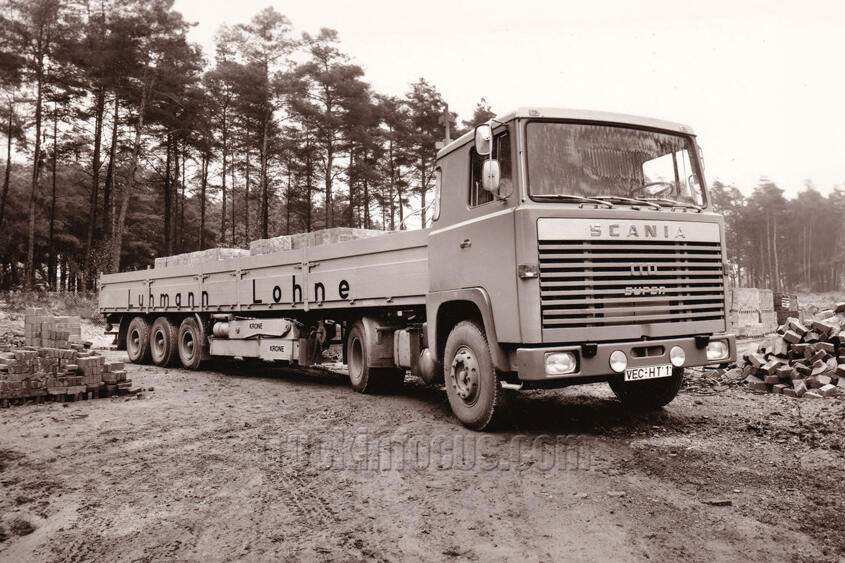
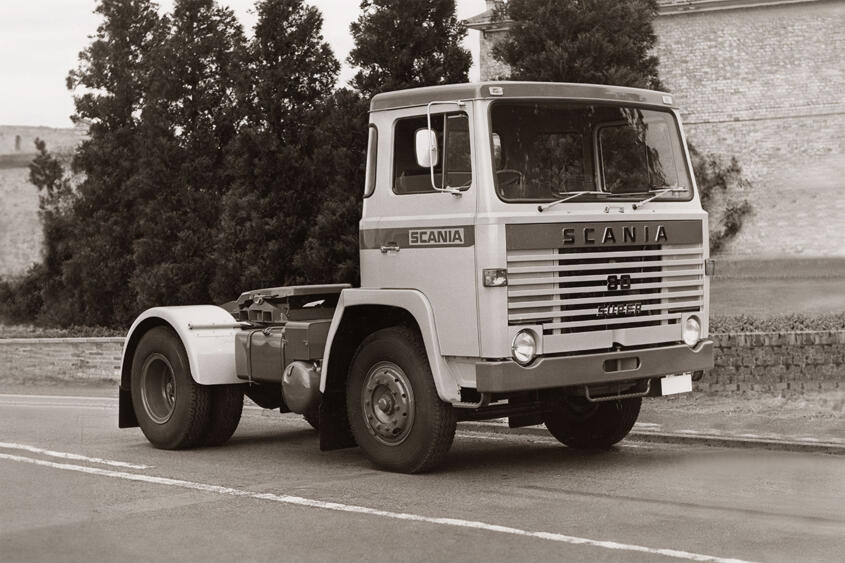
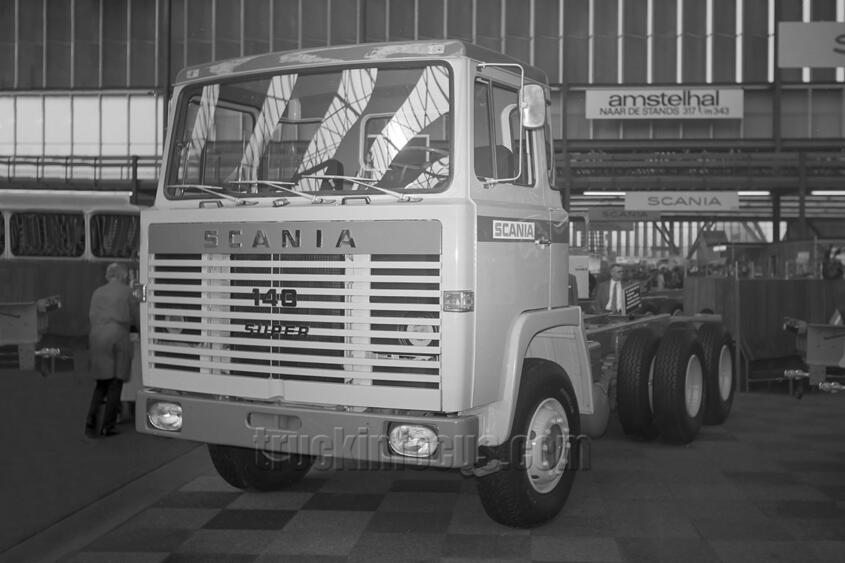
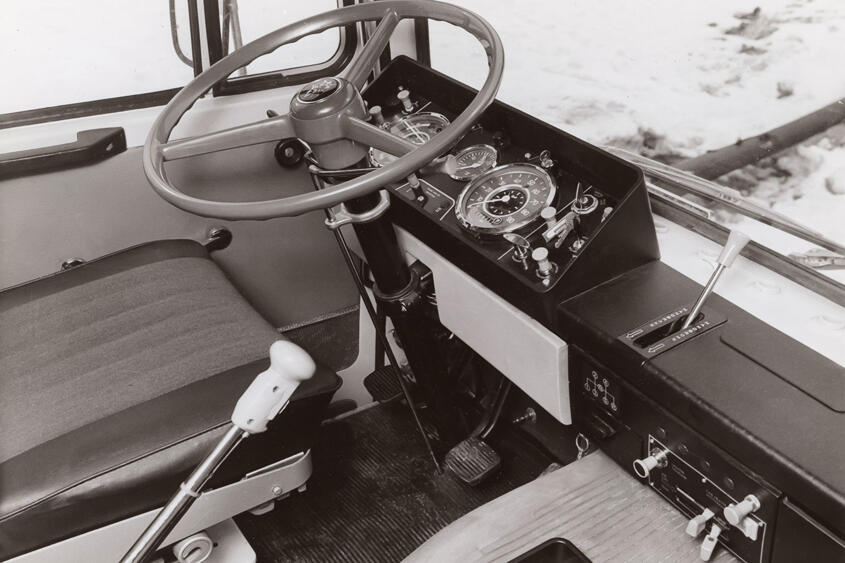
In 1969, the LB 80 with a low cab and the new top-of-the-line LB 140 model with the DS 14 V8 turbo engine were added. The new engine was a milestone: with a displacement of 3.75 gallons, it produced 350 hp, making it the most powerful in Europe. The power unit was one of the most important engines in European truck history and made Scania a legend. The slogan "King of the Road" was by no means just an empty advertising slogan. The new engine was also used in the new L 140 conventional truck, which was launched on the market in 1972. It had a newly developed, forward-tilting hood with an angular shape.
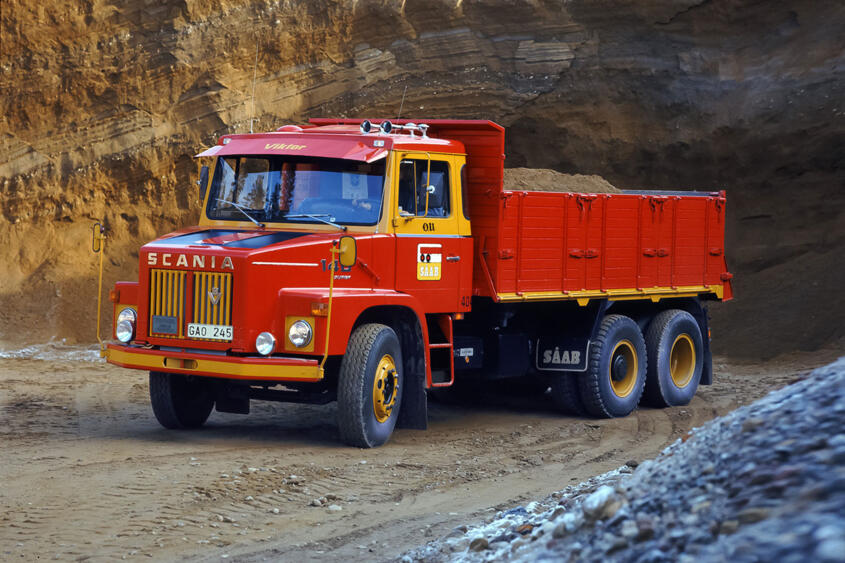
Along with the L 140 conventionals, the L 110 (later L 111) series conventionals retained their tried-and-tested design until the end of production in 1980, but were fitted with new and improved interiors, engines and transmissions over the years. A total of 115,000 units of this series were built in Sweden, Brazil and the Netherlands before production was finally discontinued.
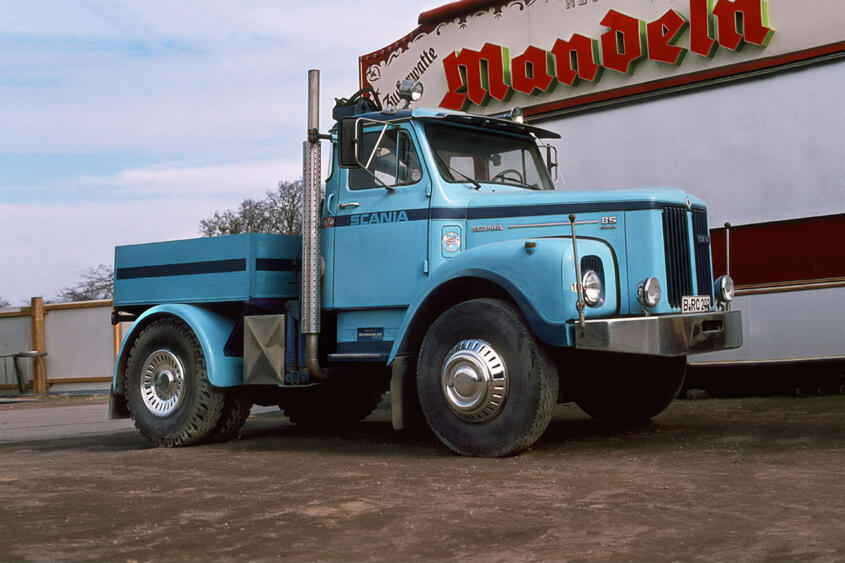
Due to their chassis, the L 80 and the LB 80 were only suitable for medium-duty applications. In order to expand the truck range and meet the demand for heavy-duty vehicles for local transport, Scania combined the smaller cabs and engines with the chassis of the larger ones. The result was two new series, which Scania launched on the market in 1969. Deviating from the "scheme zero", they were given the model designations L 85 and LB 85 (4x2) as well as LS 85 and LBS 85 (6x2). They offered a robust chassis for heavy loads, combined with an economical engine and a 10-speed gearbox. With the changeover to Series 1 in 1975, the numbers of the type designations changed from 85 to 86.
At the instigation of the dynastic Swedish Wallenberg family, Scania merged with the passenger car division of the armaments and aircraft construction group Saab in 1969. The result was Saab-Scania AB, although Scania remained a company within the company as a highly profitable commercial vehicle specialist. As a result, Saab was regularly in the red and had to be subsidized by Scania. The merger lasted 26 years until the two companies separated again in 1995 and have operated independently of each other ever since.